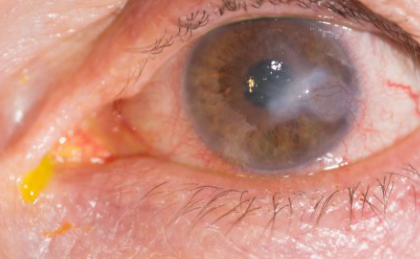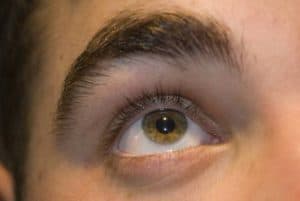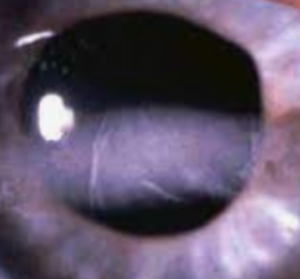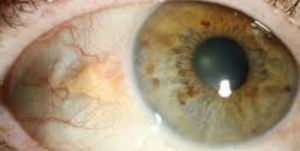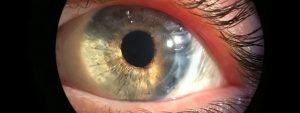Keratitis is a serious corneal inflammation that affects the lives of up to over 70,000 people every year.
What is keratitis?
Keratitis is a common inflammatory eye condition that affects the cornea, usually resulting in sight-threatening corneal ulcers.
The cornea is the clear part of the eye that covers both the iris and the pupil. Keratitis can be caused by an injury to the eye or an eye infection.
One population-based study in California estimated that 71,000 cases of severe microbial keratitis could occur per year in the USA.
No matter what the cause of keratitis is, there are ways to reduce the risk of suffering the serious consequences of corneal ulcerations.
What are the symptoms of keratitis?
If you develop any of the following symptoms, contact an eye doctor near you immediately.
Symptoms of keratitis include:
- Excessive tearing
- Eye discharge
- Inability to open your eye
- Pain and irritation in the affected eye
- Red eyes
- Sensitivity to light
- Vision changes, such as blurriness or inability to see
If left untreated, or if the infection is severe, keratitis can lead to serious complications that may permanently damage your vision.
Types of keratitis
Depending on the underlying cause, keratitis may be classified as either infectious or noninfectious.
Infectious keratitis
The different types of infection include:
- Bacteria – Staphylococcus aureus and Pseudomonas aeruginosa are the two most common types of bacteria that cause bacterial keratitis.
- Fungi – Fungal keratitis is caused by Fusarium, Candida or Aspergillus. While it is common in those who wear contact lenses, it’s also possible to be exposed to these fungi outdoors.
- Parasites – A parasite called Acanthamoeba lives outdoors and may be picked up by walking in a wooded area, swimming in a lake or infected tap water coming in contact with your contact lenses. This type of infection is called Acanthamoeba keratitis.
- Viruses – Viral keratitis is primarily caused by the herpes simplex virus, which can progress from conjunctivitis to keratitis.
Noninfectious keratitis
Noninfectious keratitis is commonly caused by:
- Wearing your contacts too many hours a day
- Using extended-wear contacts, especially past their expiration date
- Wearing your contacts while swimming
- Exposure to intense sunlight, called photo keratitis
- Eye injury, such as a scratch
- Weakened immune system
- Living in a warm climate, which increases the risk of plant materials damaging your cornea
If you suspect you may have keratitis, contact an eye doctor near you.
SEE RELATED: Corneal Ulcers
What is punctate keratitis?
Superficial punctate keratitis occurs when groups of cells on the corneal surface begin to die.
It can develop from any of the following conditions:
- A viral or bacterial eye infection
- Dry eyes
- Prolonged use of contact lenses
- An allergy to eye drops
- Blepharitis (eyelid inflammation)
- Chemicals in the eye
- UV light exposure
- Bell’s palsy
- Side effect of certain medications
Punctate keratitis is generally treated with medicated eye drops or ointments.
What is ulcerative keratitis?
Peripheral ulcerative keratitis is a serious eye disorder characterized by inflammation and ulceration of the cornea. It is often caused by an autoimmune disorder, such as rheumatoid arthritis, though it can also develop from an infection.
For this type of keratitis, treatment generally involves medication to suppress the immune system along with direct treatment of the corneal ulcer.
Can contact lenses cause keratitis?
Yes.
Improper handling of contact lenses is often the reason people develop infectious keratitis.
Additionally, non-infectious keratitis often results from wearing expired contact lenses, or leaving your lenses in for too many hours each day. Wearing extended-wear contact lenses can also increase your risk of keratitis, as can wearing your contact lenses while showering or swimming.
The incidence of microbial keratitis ranges from 0.4 to 5.2 per 10,000 person-years for rigid gas-permeable and soft contact lens wearers to >20 per 10,000 person-years for overnight soft contact lens wearers.
It is important to treat contact lens keratitis promptly, to reduce your risk of complications.
How is keratitis treated?
Treatment will depend on the underlying cause of your keratitis. Your doctor may prescribe oral medications, eye drops or both. These include:
- Antibiotics for bacterial infections
- Antifungals for fungal infections
- Antivirals for viral infections
- Biocides for parasitic infections
In rare cases, when keratitis doesn’t respond to medication, or if it causes corneal ulcers that can lead to permanent corneal damage and vision loss, your doctor may recommend a corneal transplant.
LEARN MORE: Guide to Corneal Diseases
Schedule an urgent appointment with an eye doctor near you who can diagnose and treat your keratitis.
Keratitis is a common inflammatory eye condition that affects the cornea, usually resulting in sight-threatening corneal ulcers.
No matter what the cause of keratitis is, there are ways to reduce the risk of suffering the serious consequences of corneal damage.

